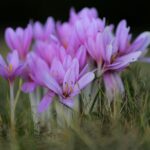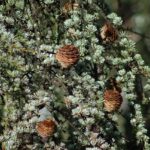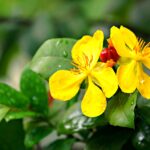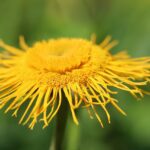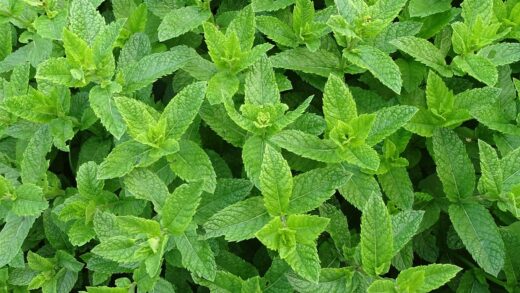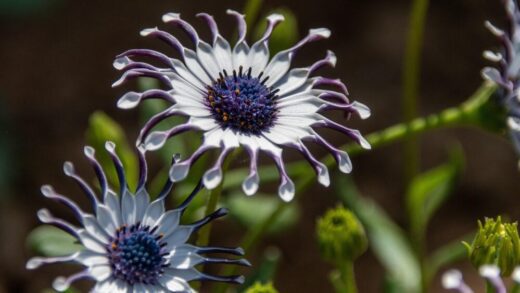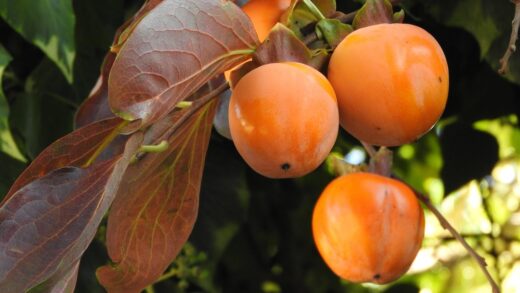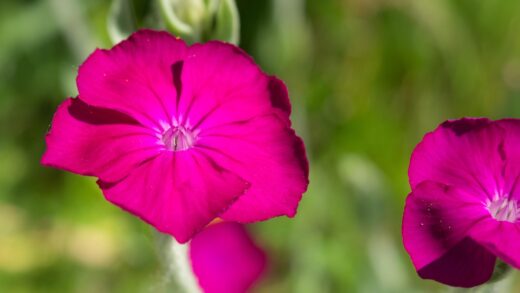The amount of light a cherry laurel receives is a determining factor in its overall health, growth habit, and appearance. One of the greatest attributes of this shrub is its remarkable adaptability to a wide range of light conditions, from deep shade to full sun. However, “adaptable” does not mean that it will perform identically in all situations. Understanding how different levels of light exposure affect the plant allows you to select the perfect location for your desired outcome, whether you are aiming for the densest possible privacy hedge or a graceful, more open specimen in a woodland garden. The ideal light exposure provides a balance that maximizes photosynthesis while minimizing stress from heat and excessive sun.
In its native environment, cherry laurel often grows as an understory shrub, accustomed to the dappled light filtering through the canopy of taller trees. This background explains its excellent tolerance for shady conditions. However, like most plants, it still requires sufficient light to produce the energy it needs for growth, flowering, and maintaining its dense foliage. While it can survive in very low light, its form may become more open and leggy as it stretches towards the available light source.
Conversely, while cherry laurel can also be grown in full, direct sun, this exposure comes with its own set of challenges, particularly in hotter climates. The intense sun can increase the plant’s water requirements and may lead to leaf scorch, a condition where parts of the leaves turn yellow or brown and appear burned. The ideal scenario for most gardening situations is a compromise between these two extremes: a location that receives several hours of direct morning sun followed by shade or filtered light during the hottest part of the afternoon.
The plant itself will often provide clues about whether its light conditions are suitable. A cherry laurel receiving an optimal amount of light will exhibit dense, lush growth with deep green, glossy leaves and will flower profusely in the spring. A plant in too much shade may have sparse foliage and fewer flowers, while one in too much sun might show signs of discoloration or burning. By learning to read these signs, you can better assess your planting site and ensure your cherry laurel has the light it needs to thrive.
The versatility of cherry laurel in different light conditions
The remarkable versatility of cherry laurel concerning light is one of its most prized horticultural traits. This adaptability allows it to be used in a wide variety of landscape situations where other, more demanding shrubs might fail. In urban gardens, for example, it can be planted on the north side of a building or in the shadow of a neighboring structure where it might receive only a few hours of indirect light per day. Even in these low-light conditions, it can still form a respectable screen, though its growth will be slower and less dense than a sun-grown counterpart.
More articles on this topic
This tolerance for shade makes it an invaluable plant for woodland gardens or for planting beneath the canopy of large, established trees. In these settings, it can provide an evergreen backdrop and structure where many other plants would struggle to survive due to the limited light. Its glossy, dark green leaves also provide a beautiful contrast against the textured bark of trees and the more delicate foliage of other shade-loving perennials like ferns and hostas. This ability to thrive in the root-congested and shady environment under trees is a significant advantage.
On the other end of the spectrum is its ability to grow in full sun. In cooler, more temperate climates, cherry laurel can perform magnificently in an open, sunny position, growing quickly into a thick, impenetrable hedge. The increased light energy allows for maximum rates of photosynthesis, fueling rapid and dense growth. However, this full-sun placement requires a trade-off: the plant will have much higher water needs and the soil must be kept consistently moist to prevent drought stress and leaf scorch.
This wide range of tolerance means that a single hedge of cherry laurel can often successfully navigate varying light conditions along its length. A hedge might start in a full sun position, run along the side of a house into partial shade, and end in a deeply shaded corner of the property. While you may notice some differences in the density and growth rate along the hedge, the overall continuous, uniform appearance can be maintained, a feat that is difficult to achieve with less adaptable species.
Optimal light for dense growth and flowering
For gardeners seeking the densest possible growth, which is often the primary goal when planting a privacy hedge, providing the right amount of light is crucial. The optimal light condition for promoting thick, bushy foliage is partial sun. Specifically, a location that receives approximately four to six hours of direct sunlight per day is considered ideal. Morning sun is particularly beneficial, as it is less intense than the harsh afternoon sun. This exposure provides ample light energy for vigorous growth without the associated stresses of excessive heat and moisture loss.
More articles on this topic
This level of light also encourages the best flowering display. Cherry laurel produces fragrant spikes of creamy-white flowers in the spring. While the plant is primarily grown for its foliage, the flowers are an attractive bonus, providing a source of nectar for pollinators. A plant growing in deep shade may produce very few flowers or none at all, as it directs its limited energy resources toward leaf production and survival. In contrast, a plant receiving several hours of direct sun will have the energy reserves needed to support a profuse blooming period.
When aiming for a dense hedge, light exposure should be considered from top to bottom. A common problem with tall hedges is that the upper foliage shades the lower branches, causing them to become thin and bare over time. This can be mitigated by ensuring the hedge receives light along its entire face. Pruning the hedge so that it is slightly narrower at the top than at the bottom—a shape known as a batter—allows sunlight to penetrate to the lower portions of the plant, encouraging them to remain full and leafy.
If a full sun location is the only option available, you can still achieve dense growth, but other cultural practices become even more important. Consistent and deep watering is non-negotiable to compensate for the high rates of transpiration. Applying a thick layer of organic mulch over the root zone is also essential to help keep the soil cool and moist. With these measures in place, a cherry laurel can certainly thrive in full sun, but the partial sun location remains the sweet spot for achieving maximum density with minimum stress.
Performance in shady locations
Cherry laurel is widely regarded as one of the best broadleaf evergreens for shady areas. It can tolerate a significant amount of shade, including the deep shade found under a dense tree canopy or on the north-facing side of a building. In these low-light environments, the plant’s growth rate will be noticeably slower compared to a specimen grown in more sun. However, it will still maintain its evergreen nature and can provide a valuable sense of lushness and structure in parts of the garden where few other shrubs can survive.
One of the aesthetic advantages of growing cherry laurel in the shade is the quality of its foliage. In lower light, the leaves often develop a deeper, richer, and darker shade of green. They also tend to grow larger than they would in full sun. This combination of larger, darker leaves can create a very luxurious and elegant appearance. The plant is also less likely to suffer from problems like leaf scorch or pest issues like spider mites, which are more common in hot, sunny conditions.
The growth habit of a shade-grown cherry laurel will be different from one grown in the sun. The plant will naturally be more open and less dense. The branches may become longer and more spread out, a phenomenon known as etiolation, as the plant actively seeks out more light. While this may not be ideal if you are trying to create a solid privacy screen, this more graceful, arching form can be very attractive in a more naturalistic or woodland garden setting, where a rigidly dense plant might look out of place.
To get the best performance from a cherry laurel in a shady spot, a few considerations are key. Good soil preparation is essential, as the plant will be competing with tree roots for water and nutrients. Amending the soil with plenty of compost will help. While the plant will be more tolerant of dry conditions in the shade than in the sun, it will still need consistent moisture to get established. Occasional pruning can also help to encourage a slightly denser habit, even in low light, by stimulating branching.
Symptoms of improper light exposure
Recognizing the signs of incorrect light exposure is key to diagnosing and correcting problems with your cherry laurel. A plant that is receiving too much direct sun, especially intense afternoon sun in a hot climate, will often show signs of sun scorch. This appears as yellow or brown, dried-out patches on the leaves, particularly on the parts of the plant most exposed to the sun. The leaves may also take on a generally washed-out, yellowish-green appearance rather than their typical deep, glossy green. In severe cases, the edges of the leaves may curl and become crispy.
Another symptom of excessive sun exposure is wilting. Even if the soil is adequately moist, a cherry laurel in full sun may wilt during the hottest part of the day simply because the leaves are losing water through transpiration faster than the roots can absorb it. While the plant may recover as the temperature cools in the evening, this daily stress can weaken it over time and make it more susceptible to other problems. Increased water needs and a higher likelihood of spider mite infestations are also associated with full-sun locations.
Conversely, a cherry laurel that is not receiving enough light will also display clear symptoms. The most obvious sign is a sparse, open, and leggy growth habit. The stems will be elongated with greater distances between the leaves as the plant stretches towards the light. The overall density of the foliage will be poor, making it unsuitable as a screen. While the leaves may be a deep green, the plant will lack vigor and will produce few, if any, flowers.
In conditions of very deep, prolonged shade, the plant’s health may begin to decline. The lower leaves may yellow and drop, and the plant may become more susceptible to fungal diseases due to the lack of air circulation and sunlight to dry the foliage. If you observe these symptoms, the solution is either to move the plant to a brighter location or to try and increase the amount of light it receives in its current spot. This could be achieved by thinning the canopy of any overhanging trees to allow more dappled light to filter through.







